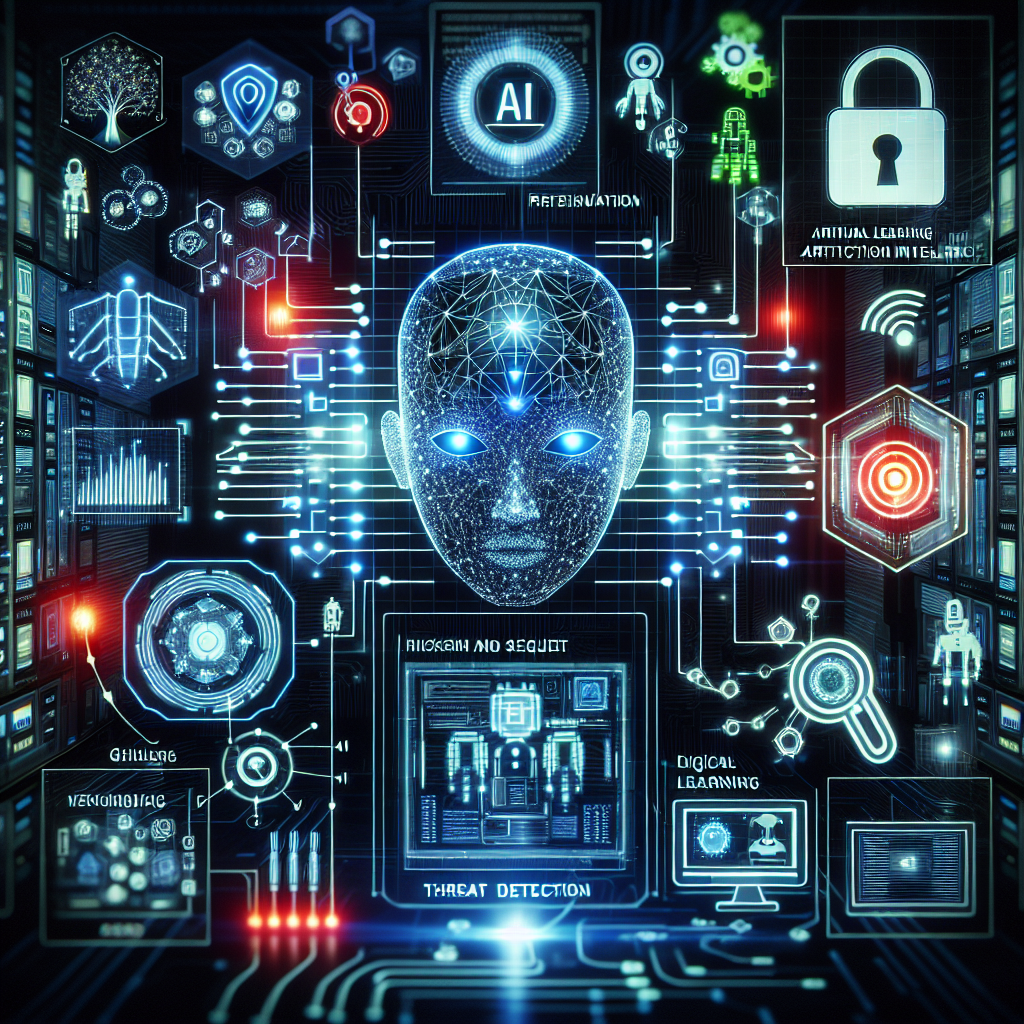The Future of Cybersecurity: AI-Driven Threat Detection and Prevention
In today’s digital age, cybersecurity has become more important than ever before. With the increasing number of cyber attacks and data breaches, organizations are constantly looking for new and innovative ways to protect their sensitive information. One of the most promising solutions that have emerged in recent years is the use of artificial intelligence (AI) for threat detection and prevention.
AI-driven cybersecurity solutions have the potential to revolutionize the way we protect our data and information. By utilizing machine learning algorithms and advanced analytics, AI can continuously monitor and analyze vast amounts of data in real-time to detect and respond to threats quickly and effectively. This proactive approach to cybersecurity can help organizations stay one step ahead of cybercriminals and minimize the risk of data breaches.
One of the key advantages of AI-driven cybersecurity is its ability to adapt and learn from new threats. Traditional cybersecurity tools often rely on predefined rules and signatures to detect malicious activity, which can be easily bypassed by sophisticated cyber attacks. AI, on the other hand, can analyze patterns and anomalies in data to identify potential threats, even if they have never been seen before. This proactive approach makes AI-driven cybersecurity solutions more effective at detecting and preventing cyber attacks.
Moreover, AI-driven cybersecurity solutions can also help organizations automate their threat response processes. By leveraging AI to analyze and prioritize security alerts, organizations can reduce the burden on their security teams and respond to threats more quickly. This can help organizations improve their overall security posture and minimize the impact of cyber attacks.
Another key benefit of AI-driven cybersecurity is its ability to provide real-time threat intelligence. By continuously monitoring and analyzing data, AI can identify potential threats and vulnerabilities before they are exploited by cybercriminals. This proactive approach can help organizations prevent data breaches and protect their sensitive information from unauthorized access.
However, while AI-driven cybersecurity offers many advantages, it also raises some concerns. One of the main challenges is the potential for AI to be exploited by cybercriminals. As AI becomes more advanced, cybercriminals may use AI-powered tools to launch more sophisticated and targeted attacks. This can make it harder for organizations to defend against cyber threats and protect their data from unauthorized access.
Another concern is the potential for AI to make mistakes or errors in threat detection. While AI can analyze vast amounts of data and identify patterns, it is not infallible. There is always a risk that AI-driven cybersecurity solutions may miss certain threats or generate false positives, which can lead to security breaches and data loss.
Despite these challenges, the future of cybersecurity is likely to be driven by AI. As cyber threats become more complex and sophisticated, organizations will need advanced tools and technologies to protect their sensitive information. AI-driven cybersecurity solutions offer a promising way to enhance security and reduce the risk of data breaches.
FAQs
Q: How does AI-driven cybersecurity differ from traditional cybersecurity tools?
A: AI-driven cybersecurity uses machine learning algorithms and advanced analytics to continuously monitor and analyze data in real-time, allowing organizations to detect and respond to threats more effectively. Traditional cybersecurity tools, on the other hand, often rely on predefined rules and signatures to identify malicious activity, which can be easily bypassed by sophisticated cyber attacks.
Q: What are the advantages of AI-driven cybersecurity?
A: AI-driven cybersecurity offers several advantages, including the ability to adapt and learn from new threats, automate threat response processes, provide real-time threat intelligence, and improve overall security posture. These advantages can help organizations stay one step ahead of cybercriminals and protect their sensitive information from unauthorized access.
Q: What are the challenges of AI-driven cybersecurity?
A: Some of the challenges of AI-driven cybersecurity include the potential for AI to be exploited by cybercriminals, the risk of AI making mistakes or errors in threat detection, and the need for organizations to invest in advanced technologies and skills to implement AI-driven cybersecurity effectively. Despite these challenges, the benefits of AI-driven cybersecurity outweigh the risks in the long run.
Q: How can organizations implement AI-driven cybersecurity?
A: Organizations can implement AI-driven cybersecurity by leveraging AI-powered tools and technologies, such as machine learning algorithms, advanced analytics, and threat intelligence platforms. By integrating these tools into their existing security infrastructure, organizations can enhance their threat detection and prevention capabilities and improve their overall security posture.

